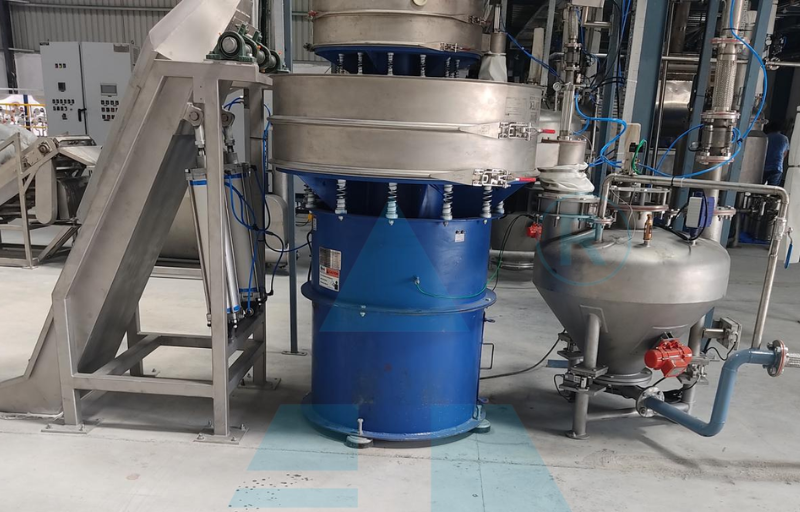-
Send us a mail [email protected]
-
Call us anytime +91-9999884400

A sugar handling system is a comprehensive solution designed to transport, store, and process sugar efficiently and safely. Sugar handling systems, from their components and types to the benefits they offer, common challenges, and future trends. Whether you're looking to enhance operational efficiency or ensure compliance with industry standards, understanding the intricacies of these systems is essential.
What are sugar handling systems?
Sugar handling system are engineered solutions that facilitate the movement, storage, and processing of sugar within manufacturing and processing facilities. These systems are vital for industries where sugar is a primary ingredient, including confectionery, baking, and beverage production. By ensuring a smooth and efficient flow of sugar, these systems help maintain product quality and optimize production processes.
Components of a sugar handling system
A typical sugar handling system comprises several components, including conveyors, hoppers, silos, and dust collectors. Conveyors are used to transport sugar from one point to another, while hoppers and silos provide storage solutions. Dust collectors play a critical role in maintaining air quality by capturing sugar dust, which can pose health risks and increase the likelihood of explosions.
Pneumatic conveying systems
Pneumatic conveying systems use air pressure to transport sugar through pipelines. This method is ideal for transporting sugar over long distances and is known for its ability to maintain the integrity of the sugar particles, preventing breakage and dust formation.
Mechanical conveying systems
Mechanical conveying systems, on the other hand, use belts, chains, or screws to move sugar. These systems are typically more energy-efficient than pneumatic systems and are well-suited for shorter distances and heavier loads.
The choice between pneumatic and mechanical systems depends on several factors, including the distance the sugar needs to be transported, the required speed, and the specific needs of the facility. Pneumatic systems offer greater flexibility and are better for maintaining product quality, while mechanical systems are often more cost-effective and energy-efficient.
Improved efficiency in sugar processing
One of the primary benefits of using a sugar handling system is the significant improvement in processing efficiency. These systems streamline the movement of sugar, reducing downtime and ensuring a steady supply to production lines.
Enhanced product quality
By maintaining a controlled environment for sugar storage and transport, handling systems help preserve the quality of the sugar, preventing contamination and degradation. This is particularly important in industries where sugar quality directly impacts the final product.
Reduced labor costs and operational efficiency
Automating sugar handling processes can significantly reduce labor costs by minimizing the need for manual intervention. Additionally, these systems enhance operational efficiency by reducing the likelihood of errors and ensuring consistent production rates.
Durability and robust construction
A reliable sugar handling system must be built to withstand the rigors of continuous operation. This means using high-quality materials and components that can resist wear and tear, corrosion, and other forms of damage.
Customizability and flexibility
Every facility has unique needs, and a good sugar handling system should be customizable to meet those needs. This includes the ability to adjust the system's capacity, layout, and features to match the specific requirements of the operation.
Safety and compliance features
Safety is paramount in any industrial setting, and sugar handling systems are no exception. A reliable system should include safety features such as explosion-proof designs, dust suppression mechanisms, and compliance with industry regulations to protect workers and equipment.
Importance of tailored solutions
Customizing sugar handling systems allows facilities to optimize their operations and achieve better efficiency and product quality. Tailored solutions ensure that every aspect of the system aligns with the specific needs and constraints of the facility.
Factors to consider for customization
When customizing a sugar handling system, several factors must be considered, including the type of sugar being handled, the facility's layout, and the desired level of automation. Other considerations might include the system's capacity, energy efficiency, and maintenance requirements.
Examples of customized sugar handling systems
Customized solutions might include unique conveyor designs for specific facility layouts, specialized dust collection systems for handling fine sugar particles, or automated controls tailored to the facility's production processes.
Sugar dust and explosion risks
One of the most significant challenges in sugar handling is managing sugar dust, which can pose serious health risks and increase the potential for explosions. Ensuring proper dust collection and implementing explosion-proof designs are crucial for maintaining a safe working environment.
Maintenance and operational challenges
Like any industrial system, sugar handling system require regular maintenance to operate effectively. Common maintenance challenges include keeping conveyors clean, ensuring dust collectors function properly, and monitoring the system for signs of wear and tear.
Solutions to overcome these challenges
To overcome these challenges, facilities should implement regular maintenance schedules, invest in high-quality components, and train staff to recognize and address potential issues. Additionally, using advanced monitoring systems can help detect problems early and prevent costly downtime.
Integration of automation technologies
Automation plays a vital role in modern sugar handling system, offering numerous benefits, including increased efficiency, reduced labor costs, and enhanced safety. Automated systems can handle repetitive tasks, monitor system performance, and even detect and respond to potential issues before they become problems.
Benefits of automated sugar handling systems
Automated sugar handling system improve accuracy and consistency, reduce the risk of human error, and allow facilities to operate more efficiently. They can also enhance safety by reducing the need for manual intervention and providing better control over system operations.
Applications in various industries
Sugar handling system are used in a wide range of industries, from food and beverage production to pharmaceuticals and chemical manufacturing. Each sector requires tailored solutions to meet its unique needs, whether it's maintaining product purity in pharmaceuticals or optimizing efficiency in confectionery production.
